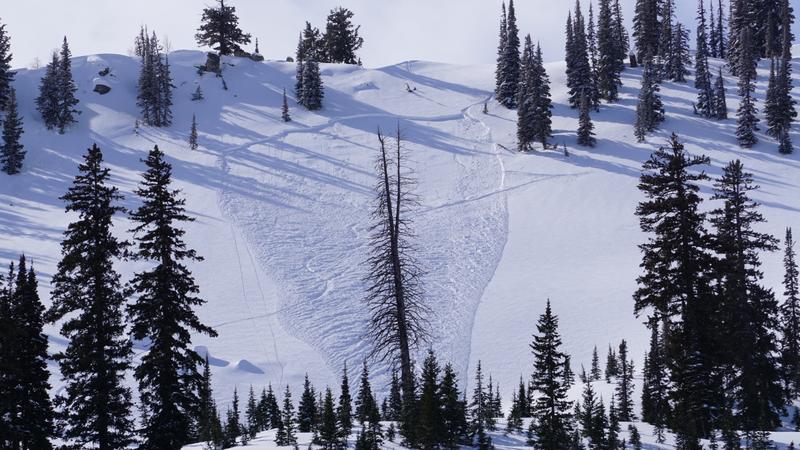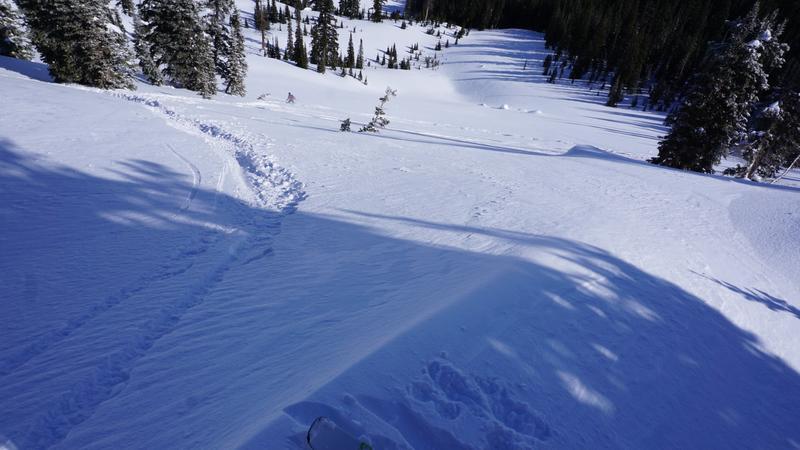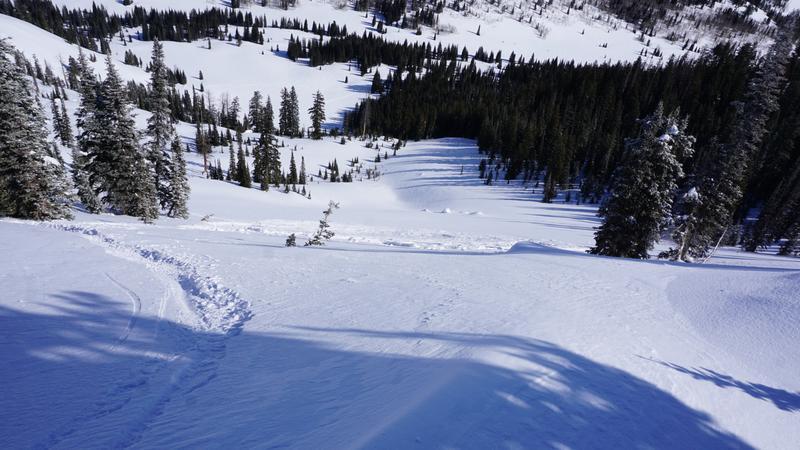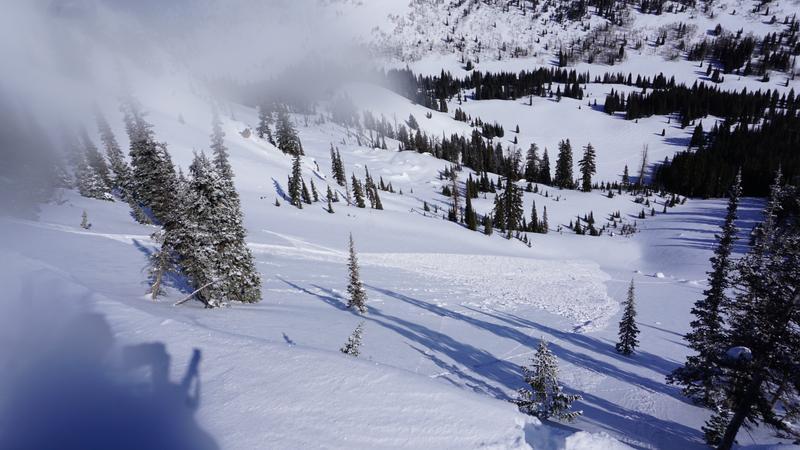Observer Name
Pitt Grewe
Observation Date
Monday, February 17, 2020
Avalanche Date
Monday, February 17, 2020
Region
Logan » Franklin Basin » Steam Mill Canyon » Boiler Bowl
Location Name or Route
Boiler Bowl
Elevation
9,000'
Aspect
North
Slope Angle
37°
Trigger
Skier
Trigger: additional info
Unintentionally Triggered
Avalanche Type
Soft Slab
Avalanche Problem
Wind Drifted Snow
Weak Layer
New Snow/Old Snow Interface
Depth
12"
Width
100'
Vertical
400'
Comments

Just wanted to add some photos and info about the slide in Boiler Bowl on Monday. I was part of the party that triggered the slide. We stayed up in the area on Sunday and night. We watched it snow all afternoon. and then headed it out right before sunset to check out what the wind was doing on the ridge on the northside of White pine canyon, East of Boiler. The wind was nuking. 30 - 40 mph gusts. Lots of snow moving around. We kicked some cornices on a test slope and it was very reactive, propagated nicely. The E - NE aspects were active. Once you got straight north, we could not get anything to move. But it was just the wind transported snow. A layer of about 3-4 inches. The wind howled all night where we were staying and blew in all our tracks overnight and quit about 5am.
Monday morning we headed toward Boiler bowl and ran into the Amy and Eric making laps on Burner run. Exchanged observations, discussed conditions and were not planning on dropping into Boiler but wanted to check out what was happing. So we walked the ridge and kicked cornices and saw no reaction. Not even shooting cracks., which surprised us based off of what we saw the night before. We could also see small pockets that had ripped out during the storm in the east-facing aspect of the Boiler.
We discussed the risks heavily and possible scenarios, and after a lot of discussion, it was decided the probability of triggering a windslab was considerable, the consequences and size of a slide were lower. One member of our party decided he was willing to take that risk and picked a conservative line down. He ski cut the top to a tree island. Right across a wind slab. We saw no cracks or settling from his ski cut. He took a couple more turns hugging the tree island. On the second turn, right where the slope rolls over to the steepest pitch (37 degrees) the fracture shot out to the right about 100 feet and started to move. The skier was is a very favorable position and easily turned off the slab right below the tree island. The slide ran slow. Almost like a wet slide. The crown was about 12 inches at the tallest point. The majority of it was probably 8 inches.
The skier traversed the debris which was still soft to the right side of the bowl and skinned back up to the ridge through the trees. See the pictures for the moments it fractured and the aftermath.
I am feeling a little guilty about the process as we were presented with obvious red flags the night before and then sucked into the good looking slope with the sunshine and the lack of signs once we were standing on top. Especially because we have all skied that bowl a lot over the past 20 years and know what it is capable of. So maybe the familiarity with the area played a factor as well. I think the other idea that played a role was that if it slid, it would not be large. We were pretty confident that the wind slab was not deep and there was a very low risk of a bigger deep slab instability. Either way, we definitely crossed a line and are lucky it ended up the way it did. Another day of lessons taught to us in the mountains.
See the photos for a sequence of the fracture. Photos are taken from the ridge above where we watched. You can see the fracture start to the right of the skier.




Comments
From EAF whom watched the avalanche from a distance:
We were riding in the Boiler Bowl area and witnessed a skier dropping into Boiler Bowl Proper. In the second or third turn, we watched the slope fracture around the skier began to slowly slide. The skier was able to ski off to the left side of the soft slab and was safe. The slab appeared to be about 12 inches deep ran approximately 3-400 vertical feet and only involved the new snow received over the last couple of days. The slope was approximately 30-32 degrees and faced Northeast. (the slope is actually more in the 37 to 38 degree steepness range)
Prior to witnessing the slab avalanche, we observed significant wind loading on many slopes and a slightly inverted snowpack on all slopes. There was evidence of a widespread avalanche cycle, including most slopes in the lower boiler bowl (picture 2). The party that triggered the slide noted that they had observed numerous shooting cracks and sensitive cornices lower in the canyon that morning.


Coordinates






